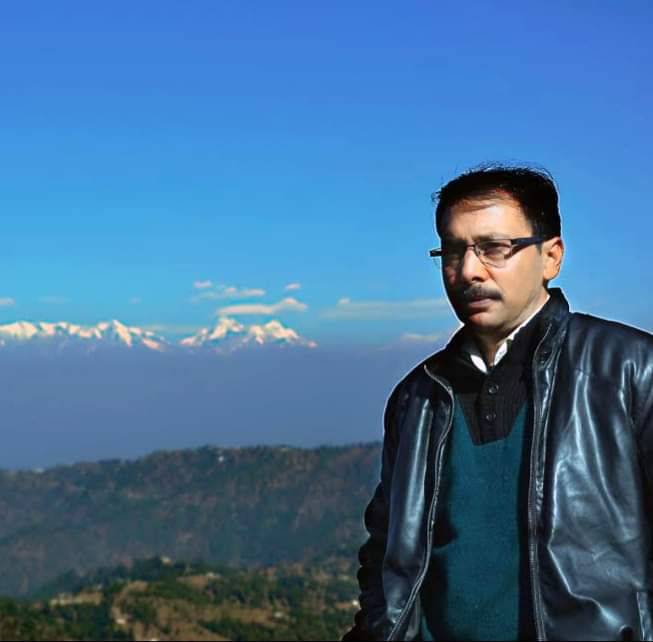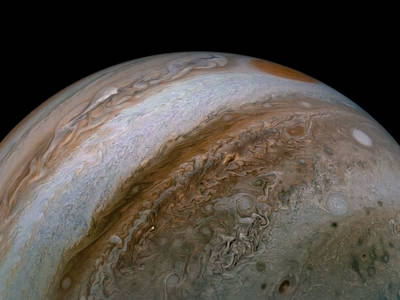*The largest body of our solar family in Puranas and Science*
– * how did the name Jupiter and Jupiter *
– * how big is Jupiter *
– * who first saw and discovered other moons *
* Juno reached the moon Europa today, difficult for humans to land *
Jupiter i.e. the largest planet of our solar family is in trend in 2022 and we are still far away from its basic information. Whereas since ancient times, due to its vastness, it has always attracted the attention of human beings. At present, on 26 September 2022, it has reached close to the earth after 70 years, it is not only illuminating the sky with a unique shade in the night sky, but it is also attracting the attention of man. What is this body that shines in the form of a big bulb apart from the stars in the night sky? Why is it visible today? Why is it looking different from the stars? Why is it so big? On seeing this for the first time, these questions must have been hesitating in your mind, let’s know what is this body? How it is? And why remains in discussions.
Why was the name of the giant body Jupiter and Jupiter?
It is the fifth body and the largest planet in our solar system, revolving around the Sun like Earth. It was recognized in very ancient times, according to Indian legends it was given the name of Devguru Brihaspati, the Guru of the Gods. There is also a mention in the Taittriya Brahmana – *Brihaspati hah firsth jaymanah, Tishya nakshatraambhisambabhuva* (when Jupiter first appeared it was near Tishya i.e. Pushya Nakshatra). In the *Bhishmaparva* of *Mahabharata* it has been said that the very bright igniting Jupiter will remain near Visakha Nakshatra throughout the year. According to the old legends of our country, Brihaspati was the guru of the gods. That’s why Jupiter is also called ‘Guru’. At the same time, the Romans called this planet Jupiter (Jupiter is Greek for Zeus and Vedic). The Greeks and Romans considered Jupiter as the greatest god.
Even though the name is the name of their mythological gods, but today we know that it is a huge body revolving around the sun like our earth.
*First Galileo saw and discovered its moon*
– * had to be the victim of the old-fashioned people on telling the information and what was the answer *
The year 1609 AD holds special importance in the history of astronomy. In the same year, the great Italian scientist * Galileo Galilei * saw the sky for the first time with his telescope and peeped through the moon till its mountains and the dark spots of the sun. Recognize.
The next year in 1610, Galileo saw the planet Jupiter in the sky with the same telescope and found that four moons are revolving around it like the Earth. He gave this information to the scholars of other astronomy, then others were not ready to accept that there are other moons apart from our moon. He didn’t even want to look through binoculars. Galileo explained that my telescope makes the objects in the sky appear larger, whereas you see the sky only with the naked eye, yet they did not agree to accept it. There was no mention of Jupiter’s moons in the Puranas, so Galileo had to be the target of scholars and astrologers who believed in mythological beliefs on this matter. Galileo replied that the old people and astrologers were rich only in eyes and ears, but I have a telescope besides eyes and ears, * which is also the world’s first telescope to look into the sky *.
*How big is Jupiter*
Jupiter is the largest planet in the Solar System, which can accommodate about 1300 bodies the size of our Earth. Even if the other planets of the solar system are added, Jupiter is many times bigger than them. Its diameter at the equator is one lakh forty two thousand nine hundred and eighty (142980) km, 11 times the diameter of the Earth. and the polar diameter is 1,33,500 km.But Jupiter is not a solid like Earth, a body with light gases, so in spite of being 1300 times bigger, it is not 1300 times heavier in weight because its density is much less than the density of the Earth (density of water is assumed to be 1) Earth’s average density is 5.5 So Jupiter’s only 1.3 is still 318 times heavier than Earth.
Due to its distance from the Sun, it takes 11.86 years to complete one revolution (12 years of Jupiter is equal to our one year) and its average distance from the Sun is about 78 crore km.
The earth makes one revolution on its axis in 24 hours. But Jupiter, despite being so huge, completes one revolution in its axis in just 10 hours. A day of 10 hours. * And it has swelled in the equator due to high speed, the stomach decreases due to the movement of humans, it has increased and swelled. The weight of a man on the surface of Jupiter will increase by two and a half times, if it is 100 kg in the earth, then it will be 250 kg in Jupiter. But it is very difficult for the man to get here right now.
It is still very difficult for humans to land in Jupiter.
Jupiter’s atmosphere is very complex and dense, which is made up of dangerous poisonous gases. The amount of hydrogen, anionia and methane gases in its atmosphere is high, as well as it is also poisonousEven if a man tries to land here even with an oxygen cylinder, he will not be able to land on the surface because there is a lot of weight of its atmosphere on its surface, under which Faulaf’s car will also be shattered, then even the antimony of a human will not be visible. Right now it is difficult to land here, but by landing on its moon, its information can be gathered by studying it.
* Today on September 29, NASA’s Juna satellite, which was sent in 2011, will reach 538 km very close to its moon Europa and gather information about it.
Other interesting information about Jupiter i.e. Jupiter, the details of its moons will be published in the next chapter.
*Article-Bablu Chandra*
photo- NASA Juno
Source – Multiplying the numerator

Journalist Space science.
Working with India’s leading news paper.
और अधिक जानें

